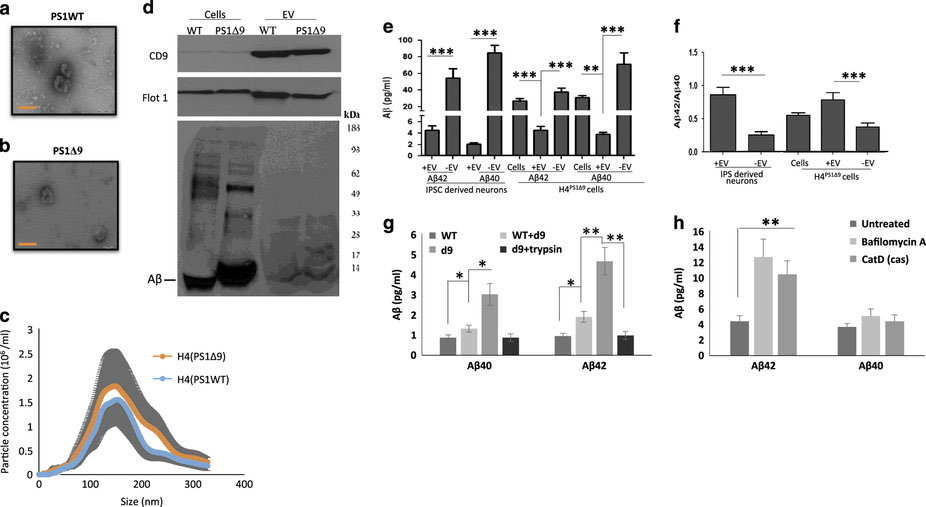アルツハイマー病モデルでは細胞外小胞に付随するAβがニューロン間の生体エネルギー的異常およびCa2+処理異常を媒介する
Extracellular vesicle-associated Aβ mediates trans-neuronal bioenergetic and Ca2+-handling deficits in Alzheimer’s disease models
2016年9月22日 npj Aging 2, Article number:16019 (2016) doi:10.1038/npjamd.2016.19
アルツハイマー病:細胞の異常の広がり方

アルツハイマー病患者の脳細胞間の変性的な病変の広がりの背景には、細胞の「鬼ごっこ」という命にかかわるゲームが隠れているのかもしれない。米国立老化研究所(メリーランド州)のMark Mattsonを中心とする研究チームは、「脳細胞間のアミロイドβタンパク質凝集体の増加」というアルツハイマー病の特徴を研究した。その研究では、脳細胞の外膜の小嚢 ― 細胞外小胞と呼ばれる ― が特に有害な形のアミロイドβを細胞間で輸送することが発見された。アルツハイマー病患者の脳を取り巻く液体から細胞外小胞を分離し、正常な脳細胞をこの小胞に接触させると、接触した脳細胞は機能に異常をきたして、場合によってはそれが細胞死につながった。アルツハイマー病の脳内の病変の広がりが解明されれば、疾患をさらに早期に検出するためのマーカー、あるいは病変を妨げて停止させるための手段が発見される可能性がある。
Alzheimer’s disease: How the cellular sickness spreads
A deadly game of cellular ‘tag’ might underlie the degenerative spread of damage between brain cells in Alzheimer’s patients. Mark Mattson from the National Institute on Aging in Maryland and colleagues investigated a hallmark of Alzheimer’s disease: the proliferation of tangled amyloid β protein clusters between brain cells. They found that small pouches of the outer membrane of brain cells—called extracellular vesicles— shuttled a particularly damaging form of amyloid β between cells. Extracellular vesicles were isolated from the fluid surrounding the brain in Alzheimer’s patients; when normal brain cells were exposed to these vesicles, cellular function in the exposed brain cells turned aberrant, occasionally leading to cell death. Understanding the propagation of Alzheimer’s disease pathology within the brain might uncover markers for detecting the disease earlier, and perhaps a window to intervene and halt the damage.

